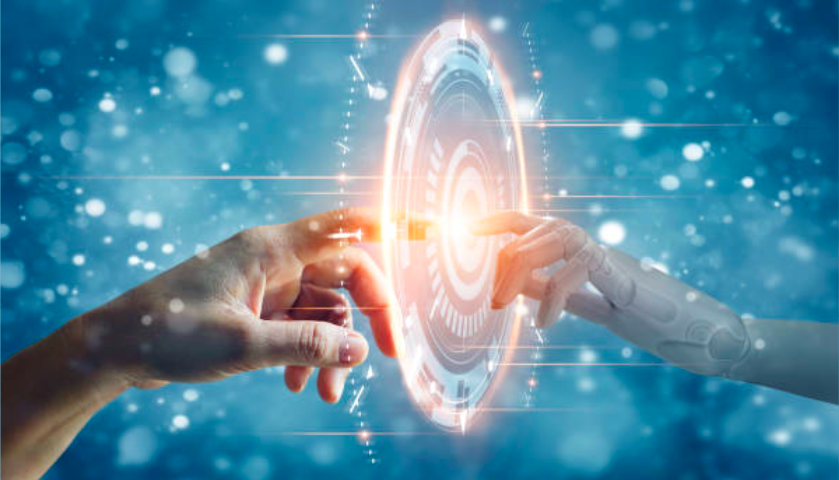The latest revolutionary Artificial Intelligence (AI) chatbot has passed one million users in less than a week. Created by the independent research body OpenAI foundation, which was founded by Sam Altman and Elon Musk, this new artificial intelligence utilizes machine learning that has been under development during the last few decades. ChatGPT (Generative Pre-Trained Transformer) is a dialogue-based AI chatbot that is capable of understanding day-to-day human language and generating human-like written text. This new language-processing tool is the latest evolution of GPTs, a type of text-generating AIs. After the release of this groundbreaking technology, many questions have been raised about what the future of AI will look like and how it will affect our society.
What is ChatGPT and how does it work?
ChatGPT is a program that allows users to type a question or request a task to be fulfilled, and the program will generate a response that mimics human language. This program is trained using AI, machine learning, and sample text from the Internet in order to generate information and answer questions through a conversational, human-like interface. According to OpenAI, “The dialogue format makes it possible for ChatGPT to answer follow-up questions, admit its mistakes, challenge incorrect premises, and reject inappropriate requests.”
“One key factor that sets GPT apart from other AI technology is its use of a transformer architecture. This allows GPT to model long-term dependencies in natural language, which is essential for generating high-quality text that is similar to human-written text. Additionally, GPT is a large language model that has been trained on a massive amount of text data, which further improves its ability to generate coherent and accurate text.”
Or so says the chatbot itself – it wrote the paragraph above. The ability of this program to actually understand natural human language and mimic it is generating attention as users are able to have alarmingly close-to-human conversations with it.
What are the capabilities and uses of ChatGPT?
Early users of this AI technology have described it as an alternative to Google since it has the capability to provide responses to complex questions (similar to the function of the search engine). The capabilities of the ChatGPT are seemingly endless as it can do everything from generating content for websites, solving complex mathematical problems, providing recommendations, answering user queries, and writing code. The prompts can also be informal; for example, the chatbot can respond to questions asking it to write songs, poems, and even extremely specific things such as a movie script about pink dancing swans.
The Open AI CEO, Sam Altman, says that ChatGPT is “an early demo of what’s possible.” “Soon you will be able to have helpful assistants that talk to you, answer questions, and give advice. Later you can have something that goes off and does tasks for you. Eventually, you can have something that goes off and discovers new knowledge for you.”
Can the new AI technology replace humans?
Due to the surprisingly accurate abilities of ChatGPT to mimic human text, there has been speculation about the effect of this new technology on content production, such as playwrights, journalists, and programmers. After its release, academics have used the program to generate responses that they say would earn full marks if submitted by a student, and programmers have also used the technology to solve obscure coding problems in various languages – all of which can be completed in a matter of seconds.
However, the program currently still lacks the nuance, critical-thinking skills, creativity, and ethical decision-making abilities that are a part of what makes us human and are necessary for success as a playwright, journalist, programmer, or in other professions. On top of that, the algorithms are not entirely trustworthy as ChatGPT is still in the development stage. Even though the AI can generate convincing text, the information is not always entirely accurate and there are still gaps within its “thought processing.” It also has limited knowledge of events after 2021. OpenAI is still working on fixing these issues while working to find ways to avoid the seemling inevitable bias that arises through the use of machine learning. Nevertheless, it is evident that this revolutionary new AI technology will begin to change the way our modern society innovates, collaborates, and communicates with one another.
Bibliography:
Lock, Samantha. “What is AI chatbot phenomenon ChatGPT and could it replace humans?” The Guardian, 5 December 2022, https://www.theguardian.com/technology/2022/dec/05/what-is-ai-chatbot-phenomenon-chatgpt-and-could-it-replace-humans. Accessed 12 December 2022.
Macfarlane, Andrew. “New AI technology can write essays – even recipes.” 1News, 9 December 2022, https://www.1news.co.nz/2022/12/09/new-ai-technology-can-write-essays-even-recipes/. Accessed 12 December 2022.
Patel, Nisha. “Can the new AI tool ChatGPT replace human work? Judge for yourself.” CBC, 10 December 2022, https://www.cbc.ca/news/business/chatgpt-artificial-intelligence-1.6681401. Accessed 12 December 2022.
Vallance, Chris. “ChatGPT: New AI chatbot has everyone talking to it.” BBC, 7 December 2022, https://www.bbc.com/news/technology-63861322. Accessed 12 December 2022.


As all CS students (and most who hang out on the 4th floor know), I am pretty far down the rabbit hole on ChatGPT.
If you’re interested in more details about OpenAI and Sam Altman’s vision of a future where “AI drives the marginal cost of some knowledge work to zero,” I highly reccomend this interview with Ezra Klien. The otiginal interview was BEFORE the public launch of ChatGPT, but Altman’s answers are looking several years BEYOND our current moment.
Transcript here:
https://www.nytimes.com/2021/06/11/podcasts/transcript-ezra-klein-interviews-sam-altman.html
Podcast linked in transcript, or … you know.. wherever you get your podcast. All hail the last living bastion of RSS.